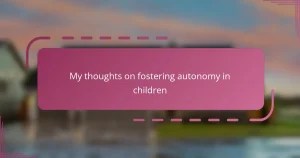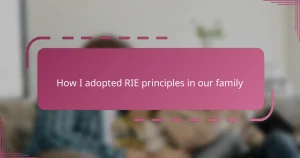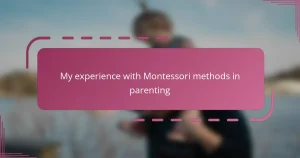Key takeaways
- Positive discipline focuses on guiding children through empathy and understanding, fostering trust instead of fear.
- Core principles include mutual respect, encouragement over punishment, and maintaining consistency to create a secure environment.
- Benefits of this approach include stronger relationships, enhanced self-discipline, and improved emotional intelligence in children.
- Common strategies involve natural consequences, offering choices, and using positive reinforcement to promote good behavior.
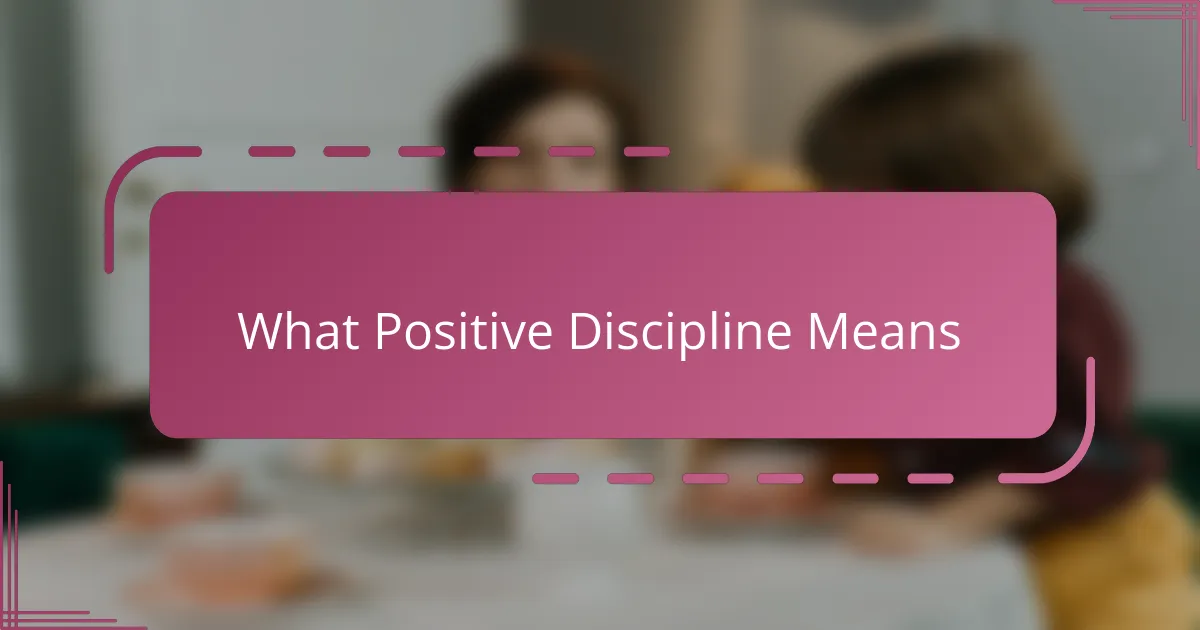
What Positive Discipline Means
Positive discipline, to me, is about guiding children with respect and empathy rather than punishment. It means understanding the reasons behind a child’s behavior and helping them learn from their mistakes in a supportive way. I’ve found that this approach creates a much stronger bond between me and my child because it’s built on trust, not fear.
Have you ever noticed how kids respond differently when they feel understood instead of scolded? That’s the crux of positive discipline. Instead of simply telling a child what not to do, it invites reflection and growth — which, in my experience, leads to more meaningful and lasting change.
Using positive discipline also means setting clear boundaries while nurturing independence. It struck me how much more cooperative my child became once they knew what was expected but also felt their feelings mattered. Isn’t it amazing how discipline can be firm yet gentle at the same time?
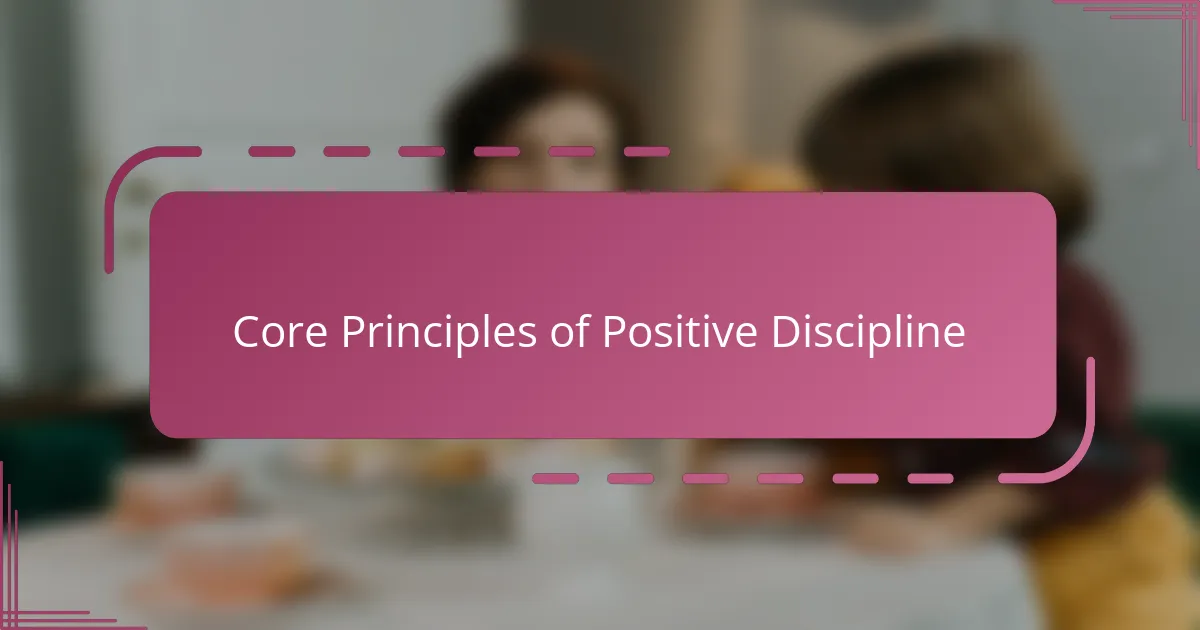
Core Principles of Positive Discipline
One core principle I’ve come to trust is the idea of mutual respect. When I treat my child with kindness and listen to their emotions, they’re more willing to listen in return. Have you ever been more open to someone who really hears you? That’s the foundation of positive discipline for me.
Another essential part is focusing on encouragement rather than punishment. Instead of pointing out mistakes harshly, I try to highlight efforts and improvements. It’s incredible how celebrating small wins motivates my child to keep trying without fear of failure.
Lastly, consistency feels crucial. I learned early on that clear, predictable boundaries help my child feel secure and understand expectations. When rules are steady but delivered with patience, it creates a safe space for growth — don’t you think children thrive best when they know where they stand?
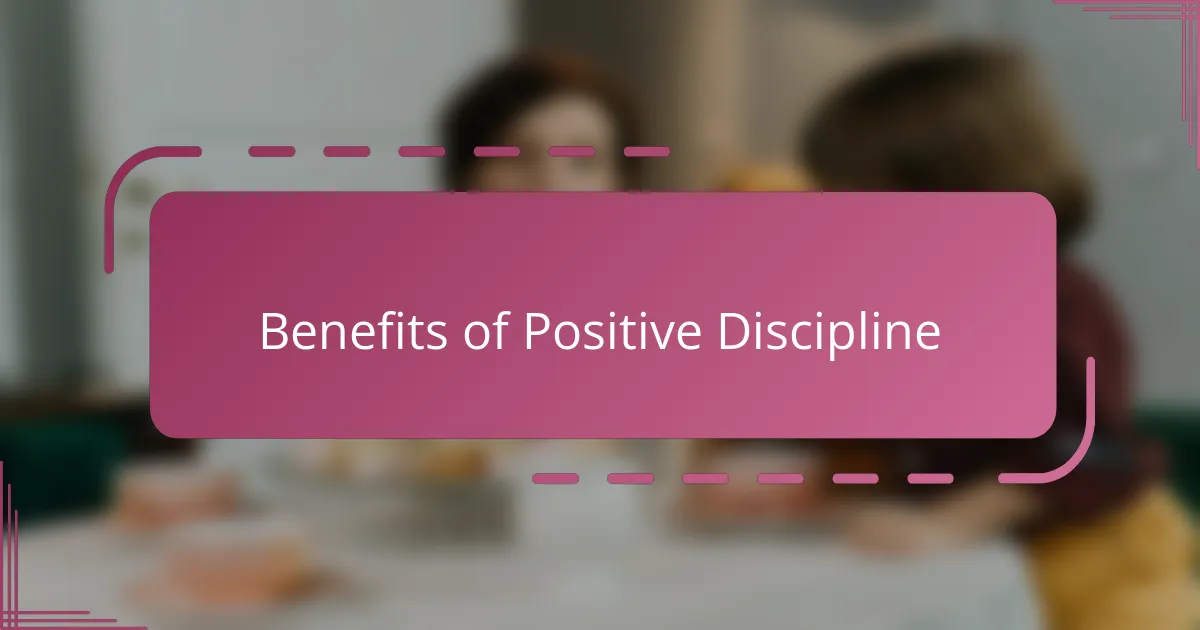
Benefits of Positive Discipline
One of the biggest benefits I’ve noticed with positive discipline is how it strengthens our relationship. When I focus on guidance instead of punishment, my child feels valued and respected, which makes them more willing to listen and cooperate. Have you ever felt that connection grow stronger simply by changing the way you communicate?
I’ve also seen how positive discipline promotes self-discipline over time. Instead of acting out of fear, my child begins to understand the impact of their choices and learns to manage their behavior independently. It’s rewarding to watch them take responsibility, isn’t it?
Another advantage is the boost in my child’s confidence and emotional intelligence. Encouraging their efforts rather than just correcting mistakes helps them feel secure enough to take on challenges. I often wonder how different parenting would be if every child felt this kind of support from the start.
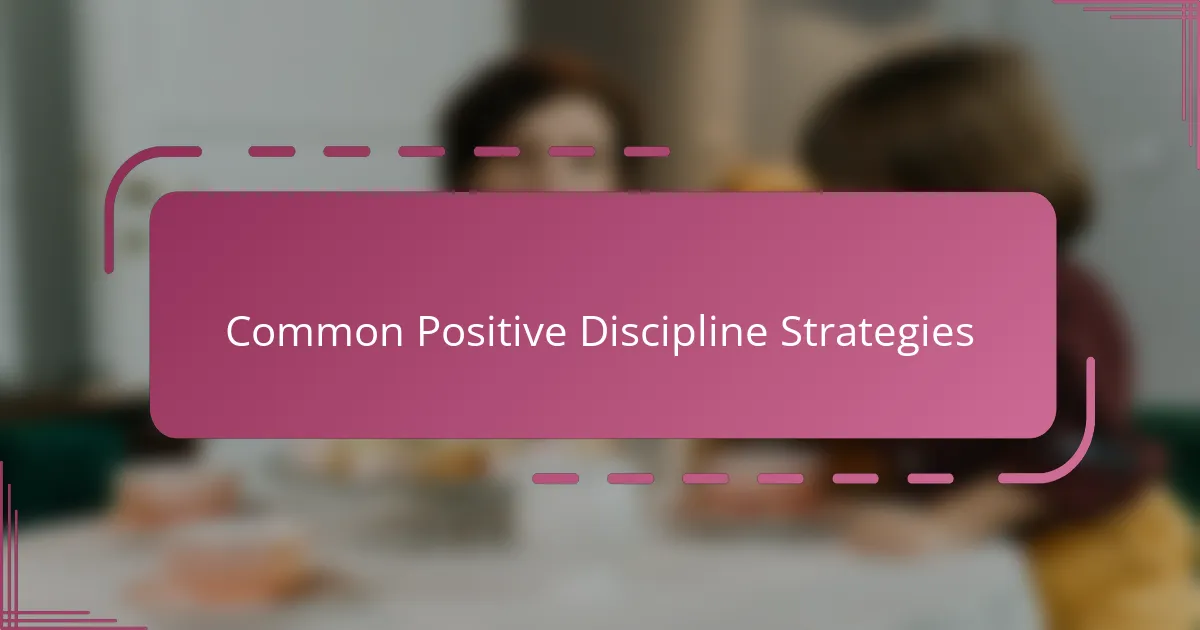
Common Positive Discipline Strategies
One common positive discipline strategy I rely on is using natural consequences. Instead of stepping in to solve every problem, I let my child experience the result of their actions in a safe way. I remember once when my daughter forgot her water bottle at home and had to drink less at recess—she quickly learned to check her backpack before leaving. Have you found that real-life lessons often stick better than lectures?
Another approach I’ve found invaluable is offering choices whenever possible. Giving my child simple options, like picking between two snacks or deciding the order of tasks, makes them feel empowered and respected. It’s surprising how much this small shift changes their cooperation. Have you noticed how children respond positively when they have a say in what happens?
Lastly, I use positive reinforcement to encourage good behavior. Praising efforts rather than just outcomes helps my child feel motivated and proud, even if things aren’t perfect. I often tell her, “I’m proud of how you tried your best,” which builds confidence and willingness to keep improving. Isn’t it powerful when encouragement replaces criticism?
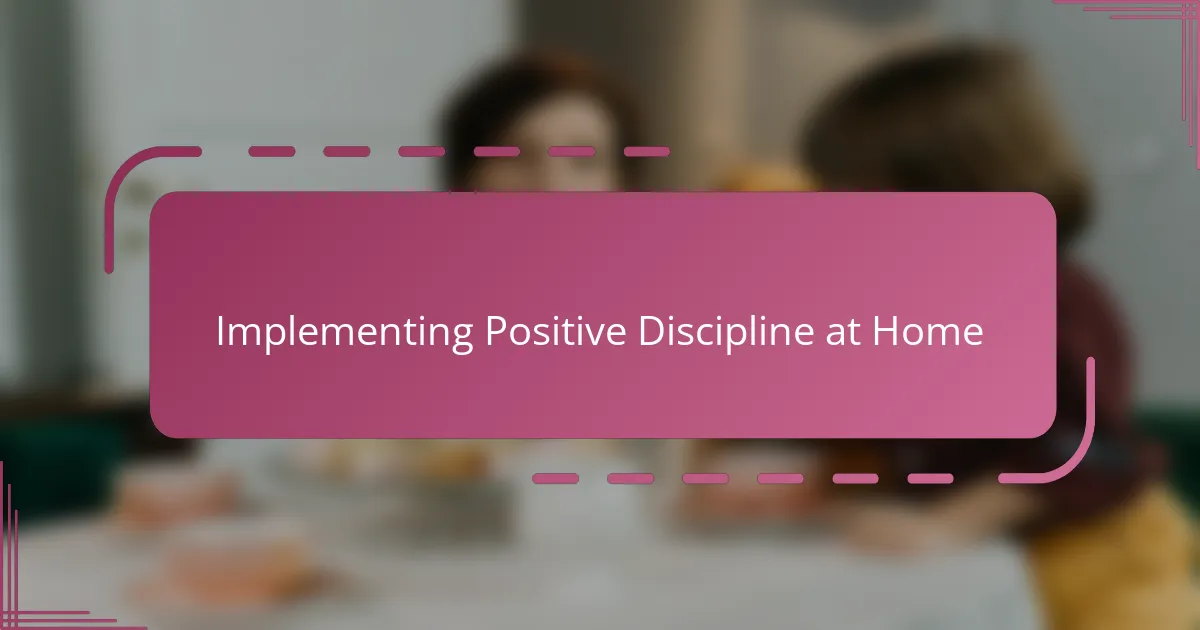
Implementing Positive Discipline at Home
Bringing positive discipline into daily routines has been a game-changer for me at home. For example, when my child throws a tantrum, instead of reacting with frustration, I try to pause and ask, “What’s really upsetting you right now?” It’s amazing how this small shift opens a door for calm conversation rather than escalating conflict.
I’ve also learned that consistency is key—but it doesn’t have to be rigid. I keep the house rules clear and predictable, yet I stay flexible enough to listen and adjust when my child’s needs change. Have you ever noticed how kids feel more secure when boundaries don’t suddenly shift but still show understanding?
One practice I swear by is involving my child in problem-solving when challenges arise. Instead of dictating solutions, I ask, “What do you think we can do to fix this?” This not only teaches responsibility but also shows respect for their ideas. Isn’t it wonderful to see them light up when their voice truly matters?
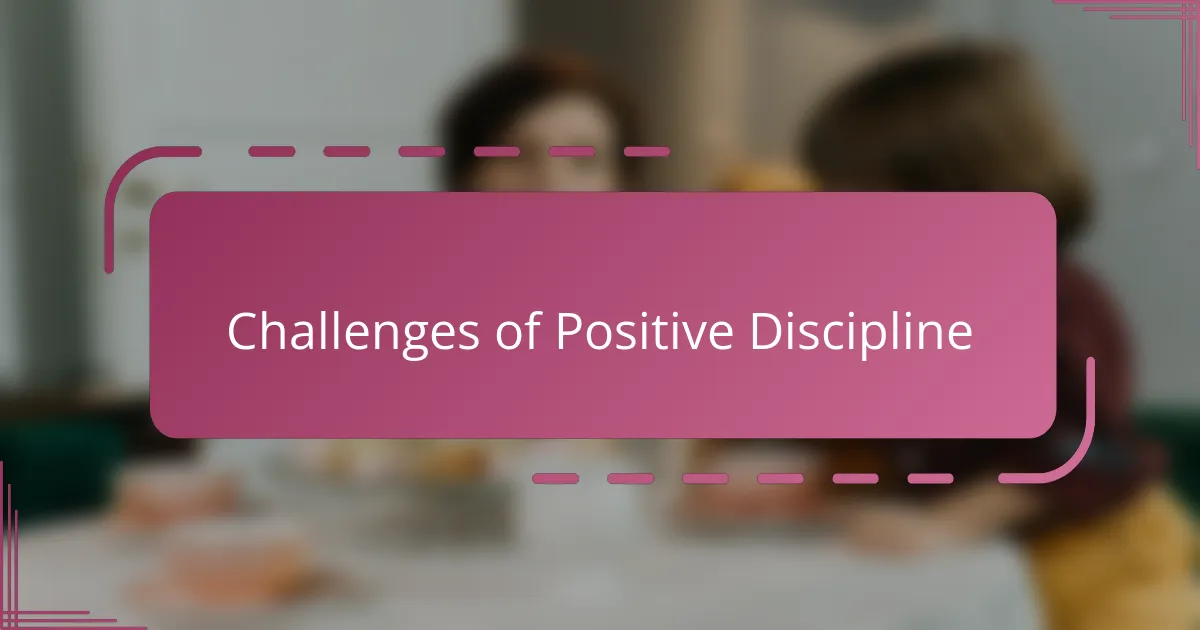
Challenges of Positive Discipline
Sometimes, I find positive discipline can feel like a slow process, especially when my child tests limits repeatedly. It takes patience to stay calm and consistent without resorting to quick punishments, and I admit—it’s not always easy to keep that steady tone when emotions run high. Have you ever struggled to be the calm voice when you’re feeling just as frustrated?
Another challenge I’ve faced is balancing firmness with empathy. It’s tricky to set clear boundaries while also validating my child’s feelings, especially during tough moments like tantrums or defiance. I remind myself that this balance is part of the growth process, though it can feel exhausting at times.
Finally, positive discipline requires a shift not only for children but for parents too. I’ve noticed that unlearning old habits—like quick scolding or giving in to avoid conflict—takes ongoing effort and self-awareness. Have you experienced that awkward phase of adjusting your own reactions before seeing real changes in your child? It’s a test of commitment, but one I believe is worth it.
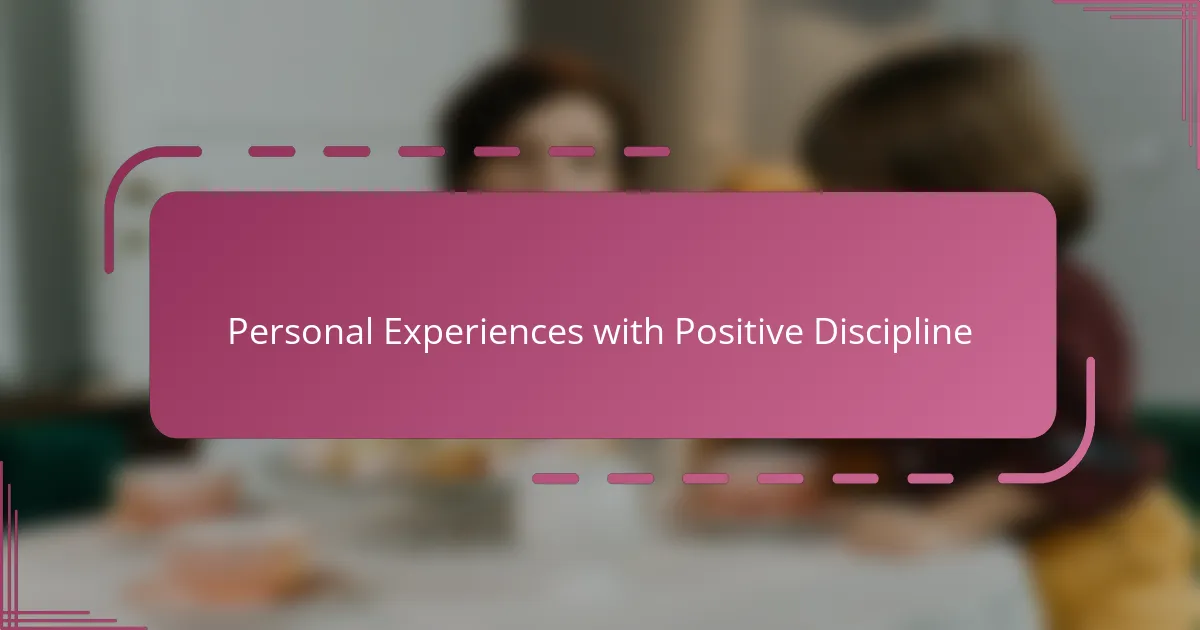
Personal Experiences with Positive Discipline
When I first started using positive discipline, I wasn’t sure if it would really work. But I remember one evening when my child threw a huge tantrum over bedtime, and instead of yelling, I knelt down, looked into their eyes, and said, “I see you’re upset—can you tell me why?” That moment changed everything. It felt like a bridge was built between us, and the tantrums slowly became less frequent.
There have been times when patience was hard to find, especially after a long day. Yet, when I kept reminding myself to respond with empathy rather than frustration, I noticed something amazing: my child started responding in kind. Have you ever been surprised by how much a calm voice can diffuse tension? It’s seriously powerful.
One thing I cherish most is how positive discipline has made our home feel safer emotionally. When my child knows I’m listening and respect their feelings, they open up more. Isn’t it incredible how feeling understood can transform behavior more than any punishment ever could? It’s moments like these that keep me committed to this approach every day.
